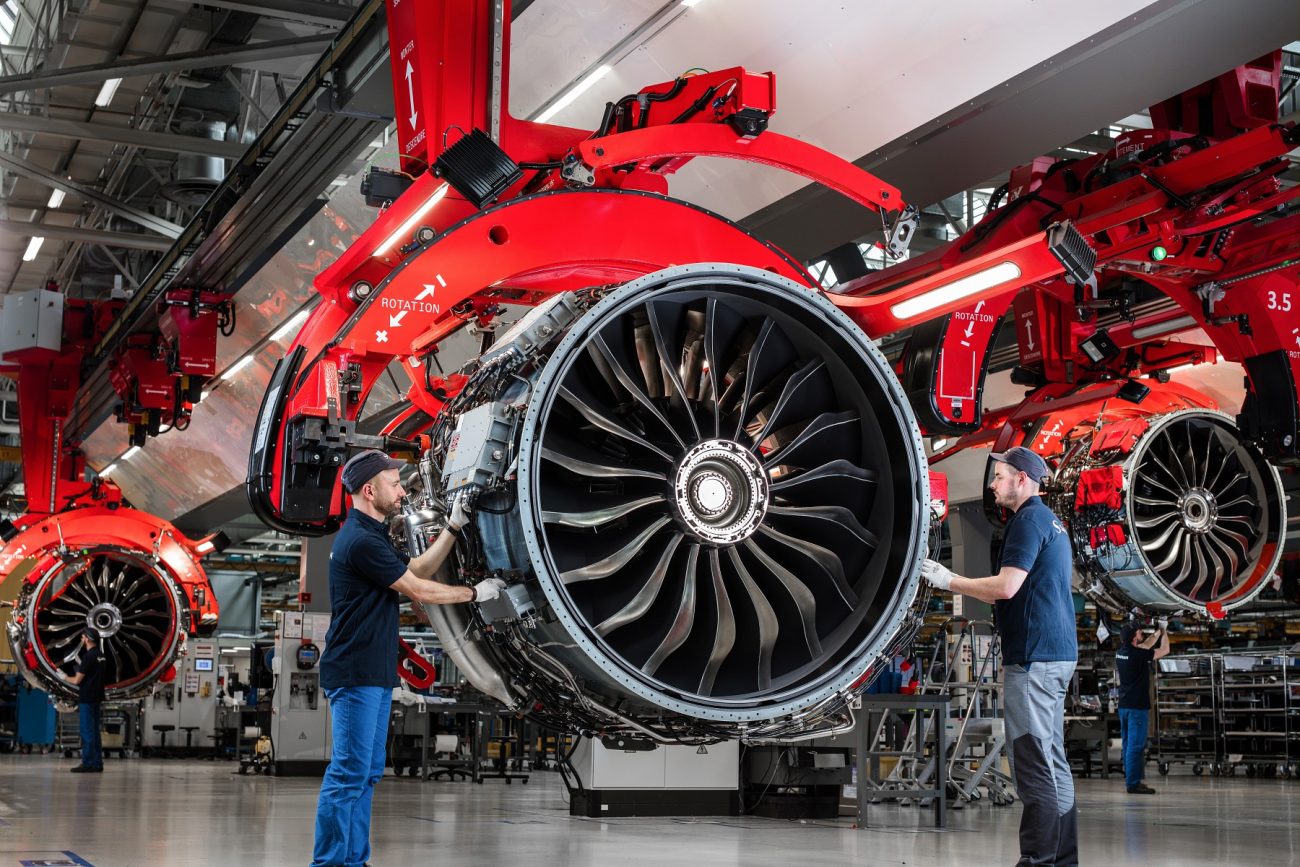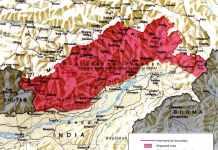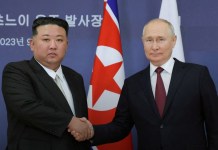India’s aerospace industry may have made strides in the last few decades, going from license production of foreign aircraft to developing its own indigenous fighter, the LCA Tejas. However, jet engine technology has remained elusive.
India’s state-owned aerospace manufacturer, Hindustan Aeronautics Ltd (HAL), inked a major deal with GE Aerospace on November 7 to acquire 113 F404-GE-IN20 jet engines for its Tejas light combat aircraft program.
The delivery would start in 2027 and conclude by 2032. HAL said that the engines and support package will be utilised for the 97 Light Combat Aircraft (LCA) Mk1A jets.
The agreement comes two months after India signed a $7 billion order for 97 indigenously developed LCA Tejas fighter jets, in addition to 83 previously ordered, to replace the now-decommissioned MiG-21 fighters.
“The delivery of these aircraft would commence between 2027-28 and be completed over a period of six years,” the defence ministry stated.
It must be noted that General Electric is currently running two years behind schedule in supplying the promised F404 engines. As per the schedule, HAL should have received the initial batch of engines by March 2023.
However, this timeline was later pushed to March 2025, causing unprecedented delays in the delivery of Tejas Mk1 and Mk1A fighters. The Indian Air Force (IAF) is yet to receive the first of the 83 Tejas Mk1A it ordered in 2021 at a time when its squadron strength has plummeted to 29, from the sanctioned 42.
However, plans are currently in full swing to produce jet engines in the country, with a significant technology transfer. Defense Minister Rajnath Singh told Network18 in an interview on November 7 that India will kick-start production of fighter jet engines in the country as early as next year in a push towards the self-reliance policy.
Hindustan Aeronautics Limited (HAL) has entered into an agreement with M/s. General Electric Company, USA, on 7th November 2025 for the supply of 113 Nos of F404-GE-IN20 engines and support package for execution of 97 LCA Mk1A programme. pic.twitter.com/zB4BVGP0LK
— HAL (@HALHQBLR) November 7, 2025
Singh stated that India is in talks with multiple international defense companies to produce jet engines, including France’s Safran and the US-based GE Aerospace.
“There are talks with many companies like GE, Safran, etc. We have taken several steps in that direction. I cannot reveal at this point, as the final decision will only be taken by the CCS (Cabinet Committee on Security). We have clarity on the concept and direction.”
The Defense Minister said with confidence that within a year, India will begin domestic production of fighter jet engines, adding that they will be “made in India, by Indians.”
India has been exploring two parallel engine manufacturing programs for its jets.
For one, it is in talks with GE Aerospace for the GE F414 engines (98 kN thrust) that could power the initial variant of India’s fifth-generation fighter, AMCA (Advanced Medium Combat Aircraft), or the AMCA Mk1. This engine, for which India has been seeking an 80% technology transfer, would also reportedly power the Tejas Mk2 variant.
In 2023, HAL and GE signed an MoU to co-produce 99 GE F414 INS6 engines for the Tejas Mk2. These same engines could also power the initial batch of AMCA fighters. The final deal in this regard was expected earlier by March 2025. However, in December 2024, it was reported that the talks had hit a roadblock as GE demanded US$1.5 billion instead of the initially anticipated US$1 billion for the deal.
The talks are now progressing smoothly, despite the latest trade tensions.
On the other hand, India is all set to collaborate with France to co-develop and manufacture a 120KN powerful jet engine for powering the later batches of AMCA, perhaps the AMCA Mk2, as well as the carrier-based Twin-Engine Deck-Based Fighter (TEDBF).
As per reports, experts from the Gas Turbine Research Establishment (GTRE), part of the Defence Research & Development Organisation (DRDO), and Hindustan Aeronautics Limited (HAL), are in advanced talks with France’s Safran Aircraft Engines to jointly design and build the engine. The project will propel India into the elite club of nations with access to high-thrust engine technology.
The project would involve 100% technology transfer and domestic manufacturing. The proposal is currently awaiting intra-defence and inter-ministerial clearances before it can be placed before the Cabinet Committee on Security for final approval.
Besides domestic manufacturing of jet engines, Rajnath Singh said India will continue to import jet engines, but stressed that there is no pressure from the US or any other nation on these purchases.
“We won’t compromise on our interests while purchasing these engines from outside. We have told (companies) that we will purchase engines from you, but you should manufacture them in India and transfer technology to us,” he said.

India’s Jet Engine Conundrum
Speaking from the ramparts of the Red Fort on India’s 79th Independence Day, Prime Minister Narendra Modi called upon India’s scientific and engineering community to take the lead in building jet engines for the country’s fighter jets, a move that he said would be crucial in achieving true self-reliance in aerospace.
India’s self-reliance in the development of cutting-edge fighter jets is incomplete without achieving self-reliance in propulsion. It is akin to having an airframe that only sits on the ground and inside manufacturing facilities, but never takes to the skies..
Experts opine that building an aero-engine requires decades of experience to produce a sturdy engine capable of withstanding high speeds and the rigors of flight. In fact, at this point, more countries possess nuclear weapons than indigenous aero-engines. It is not much different for India, which has tried, albeit unsuccessfully, to build its own jet engine.
India’s quest for a fully indigenous fighter-jet engine—the “heart” of any combat aircraft—has been a 40-year marathon.
The Gas Turbine Research Establishment (GTRE) launched the Kaveri program in the late 1980s, alongside the Tejas program. However, it failed to rev up the desired thrust.
Nine full prototype engines and four core engines have been developed, 3,217 hours of engine testing have been carried out, and Altitude Tests and Flying Test Bed (FTB) trials have been completed—but the engines were unsuitable for fighter aircraft. One significant shortfall – instead of the targeted 81 kN, the engine could only produce 70.4 kN of wet thrust, as previously explained by the EurAsian Times.
The dry version of the Kaveri engine generated roughly 49-51 kN of thrust. During high-altitude simulations conducted in Russia, the engine produced 48.5 kN of thrust. This was way below the original goal for the after-burning threshold.
However, it proved well-suited for UAV applications, particularly the 13-ton Ghatak, India’s advanced stealth Unmanned Combat Aerial Vehicle (UCAV) program.
Going ahead, DRDO plans to integrate an afterburner to increase the engine’s thrust to 73-75Kn kN for more demanding scenarios.
Some reports suggest that work is being advanced on Kaveri 2.0, a Kaveri engine derivative, but it may be a long road for the GTRE to build an engine that could power an actual next-generation fighter jet.
Experts surmise that India’s best bet for now is the co-development of an engine with a foreign manufacturer, specifically, Safran. It would not be a fully indigenous engine. Still, it would allow India to move past its reliance on exports and potentially pave the way for advancement in its own indigenous jet-engine technology.
When asked when India could expect the first engine for its fifth-generation fighter jet following talks with French firm Safran, Rajnath Singh said: “We are trying to get the manufacturing done in India as soon as possible. The CCS will decide on this soon.”
Sanjay Dixit, a retired IAS officer and defense commentator, urged “dumping GE completely” due to repeated delays, advocating Safran (or alternatives such as Rolls-Royce/Japan) for faster delivery and lower geopolitical risk.
Echoing this, Sushant Singh (Yale lecturer and ex-Army officer) points out the rarity of jet-engine tech transfer—Russia never fully shared it with India—and frames the Safran pivot as pragmatic realism over hyped GE promises.
Defense analyst Adithya Krishna Menon emphasizes Safran’s 100% ToT as a “credible substitute” to GE’s limited package, reducing dependency on U.S. approvals. He recommends parallel development of a Safran M88 variant for Tejas Mk2 prototypes, noting it could boost exports (e.g., to Rafale-operating nations) while minimizing redesign costs—potentially swinging fully to Safran in 3-5 years.
Not all are fully anti-GE. Yusuf Unjhawala (Takshashila Institution) argues for sticking with F414 for AMCA Mk1 (frozen design) to avoid resets, comparing it favorably to South Korea’s KF-21. Meanwhile, some experts suggest continuing the Safran talks as a hedge against GE.
- Contact the author at sakshi.tiwari13 (at) outlook.com
- Follow EurAsian Times on Google News




